Pain Back Between The Shoulder Blades
What is a Pain Back Between The Shoulder Blades?
Pain between the shoulder blades can be a discomforting and sometimes debilitating experience. It can stem from a variety of causes, including poor posture, muscle strain, injury, or underlying medical conditions. This type of pain can significantly impact one’s daily activities and overall well-being.
Understanding the potential factors contributing to this discomfort is crucial for effective management and treatment. With a comprehensive understanding of the underlying causes, appropriate measures can be taken to alleviate the pain and prevent its recurrence.
Aching, dull, painful, or acute pain might be felt in the shoulder blade. There is typically no cause for alarm. But occasionally, it might be an indication of something more serious.
Pain between their shoulder blades in the upper back is typical. This discomfort is referred to by doctors as interscapular pain.
Anatomy:
- It is a ball-and-socket joint in your shoulder. The ball and socket are formed by the scapula, which is the shoulder blade, and the head of the humerus, the upper arm bone.
- Numerous muscle and ligament connections hold the scapula and arm to the body. The acromioclavicular joint joins the front of the scapula (acromion) to the clavicle (collarbone).
- To keep the ball and socket in its proper alignment when you rotate your arm around your body, your scapula must likewise move.
Causes:
Joint and bone problems:
Shoulder blade pain may be brought on by several different bone or joint conditions.
A fracture can occur because the shoulder blade is a bone. This can happen as a result of a fall, an accident, or some similar direct shoulder blade injury.
Additionally, aging-related degenerative diseases might result in shoulder blade pain. These conditions include, among others:
- Arthritis
- Osteoporosis
- Scoliosis
- Spinal stenosis
- Bursitis
- Fibromyalgia
- Frozen shoulder
More precisely, those between the ages of 20 and 40 are most susceptible to ankylosing spondylitis, a kind of arthritis. Although it mostly affects the spine, this type of arthritis can also inflame and produce pain in other locations.
Pain in the shoulders and shoulder blades can also be brought on by some malignancies. Lung, breast, and colon cancer are the three most prevalent cancers that can result in shoulder blade pain.
Muscular causes:
It is typical for someone to have a muscle problem that hurts their shoulder blades. Common pain sources include the rotator cuff muscles and tendons, as well as those that go across the scapula, up into the neck, and down into the arm.
These tissues could sustain injury as a result of:
- A traumatic injury
- A pulled muscle
- A strained muscle
- Overuse
A person’s risk of injury and shoulder blade pain might be increased by weak shoulder muscles.
Cardiac causes:
Heart problems, such as the following, can cause shoulder and shoulder blade pain, including:
- Cardiovascular arrest or a heart attack
- An aortic rupture
- Inflammation of the heart’s lining
Women experience shoulder discomfort as a heart attack symptom more frequently than men do. However, anyone who is suffering shoulder pain along with other heart attack symptoms like shortness of breath has to get help right away.
Pulmonary causes:
Various lung problems can also send pain to the shoulder blades, according to Trusted Source. Here are a few instances of lung conditions:
- Lung disease
- Pneumatic embolism
- Lung collapse
Other causes:
- Fibromyalgia
- Nerve injury
- Stomach ulcer illness
- Pancreatitis
- The syndrome of myofascial pain
- Stone gallbladders
Symptoms of Shoulder Blade Pain:
One of two triangular bones in the upper back, one on either side of the spine, is the shoulder blade (scapula). They allow for a variety of shoulder movements, such as lifting and lowering the shoulders as well as moving the shoulders forward and backward.
In contrast to shoulder discomfort and pain between the shoulder blades, shoulder blade pain is restricted to the scapula or the muscles and connecting tissues that move and support it.
Indications as to the underlying cause of shoulder blade discomfort might be found in the symptoms. These could consist of:
- Pain in the scapula that may be chronic (constant), acute, throbbing, aching, burning, or migratory
- A weakened arm, especially when raising it overhead
- You have trouble raising your arm above your shoulder
- Reduction in the shoulder’s range of motion
- When moving the shoulder, you hear a snapping sound
- A cocked-up position on the side that is hurt
- A shoulder blade that is protruding (also known as “winging”).
- Consult your doctor if the soreness between your shoulder blades lasts more than a few days.
Diagnosis:
A comprehensive physical examination of the back, neck, and shoulders is the first step in the diagnosis of shoulder blade discomfort. Your symptoms, medical history, and family history will also be reviewed.
Physical Examination:
Visual analysis. From behind, your doctor will examine your damaged scapula and contrast it with the unaffected side. Your doctor could ask you to raise and lower your arms three to five times, often holding modest weights in your hands, to check for the presence of scapular dyskinesis. This will typically display aberrant motion patterns and reveal any muscular weakness.
Manual muscle testing. To ascertain whether muscle weakness is causing the aberrant scapular motion, your doctor will assess the strength of your shoulder and scapular muscles.
Corrective maneuvers. Corrective techniques are used during specific tests to help your doctor better understand your issue. These tests consist of:
Scapular assistance test (SAT). As you raise your arm during this exam, the doctor will gently press on your scapula to help it rise. It is a sign that your muscles are not strong enough to raise your arm if your symptoms improve and the arc of motion widens.
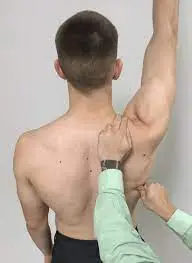
Scapular retraction test (SRT). By pressing down on your extended arm during this test, the doctor will gauge your arm strength. After that, they will manually retract the scapula and reassess your strength. Patients with scapular dyskinesis will experience a rise in muscle strength when the shoulder blade is retracted.
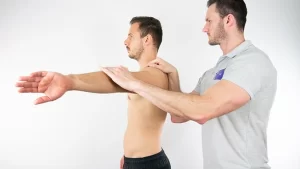
Lab Tests:
Additionally, to rule out other potential causes, your doctor may request tests like these:
- Complete blood count (CBC): This routine blood examination can aid in the identification of illnesses.
- Erythrocyte sedimentation rate (ESR): This blood test identifies common inflammation-related symptoms
- C-reactive protein (CRP): Inflammation is also assessed with this blood test.
- Liver function tests (LFTs): This group of tests is used to detect liver disease.
- Additional examinations and procedures can be prescribed by the results of these tests.
Imaging Studies:
Imaging tests can be performed to examine the organs and structures in the chest and abdominal cavities as well as the shoulder blades.
These comprise exams such as:
- Chest X-ray: You are subjected to low-dose ionizing radiation during this imaging procedure.
- Computerized tomography (CT): This imaging method produces 3-D “slices” of inside structures by combining many X-rays.
- Magnetic resonance imaging (MRI): This imaging technology creates very detailed scans of soft tissues by using powerful magnetic and radio frequency waves.
- Positron emission tomography (PET); This imaging technique is largely utilised for the detection of cancer.
Heart Tests:
In-office cardiac (heart) procedures: may be prescribed by your healthcare practitioner if they are worried about your heart.
The electrical activity of your heart during a heartbeat is measured using an electrocardiogram (ECG), a non-invasive instrument.
Cardiac stress test: During this test, your heart rate is monitored as you jog or pedal a stationary bike.
When you should see a doctor?
If your pain is serious, strange, or doesn’t go away, you should visit a doctor. A symptom that anything might be wrong is pain. Your condition could be significant, even though it might not be. You should have it examined if it is in any way bothersome.
If you also have specific symptoms in addition to your shoulder blade discomfort, you may have a serious medical problem that needs to be treated right away. If you have the following symptoms coupled with soreness between your shoulder blades:
- Breathing Difficulty
- A chest ache
- Lightheadedness
- Excessive perspiration
- Your legs may be inflamed, painful, or red.
- Spitting blood
- Fever
- Irregular or fast heart rate
- Sudden speech difficulty
- Absence of vision
- Your body’s one side is paralysed
- Consciousness is lost
Treatment:
The source and seriousness of your issue will determine the best course of treatment for your shoulder blade discomfort. Recovery takes a variable period for every individual.
Nonsurgical Treatment:
Scapular dyskinesis problems will nearly always get better with nonsurgical treatment.
NSAIDs, or non-steroidal anti-inflammatory medications. NSAIDs like ibuprofen and naproxen can help with swelling and pain relief.
Physiotherapy Treatment:
Exercise
Your back can be strengthened through exercise, which may assist in relieving shoulder pain.
Injections of corticosteroids or shoulder decompression surgery were shown to be less efficient at relieving shoulder pain than exercise therapy in a review of the literature published in 2020.
The best way to lessen your shoulder pain through exercise is to work with a physical therapist. They will create an exercise plan that is unique to your condition. In this manner, you may ensure that the exercises you perform are beneficial and do not harm your shoulder. You can be referred to a physical therapist by your health care physician.
The following are some effective exercises for your back and stomach:
Pushups
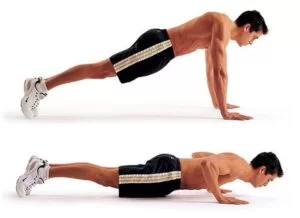
Pullups
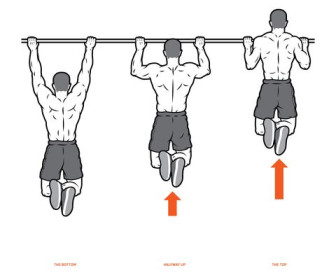
Situps

See these 10 exercises for shoulder pain and tightness relief for additional exercises.
You might attempt the following simple exercises to help strengthen your back and shoulder muscles.
Shoulder blade squeeze:

- Your posture will be helped by this workout.
- Remain upright.
- Pull your shoulder blades down and back while bringing your elbows back and in.
- Go back to your starting point.
Arm circles:
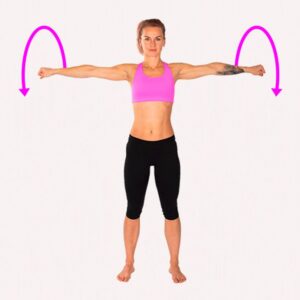
- This shoulder stretch can help you become more flexible and loosen up your muscles.
- Standing straight, with your feet shoulder-width apart and your arms down by your sides, is a good posture.
- Moving forward, make wide circles with your arms. Always maintain an erect arm posture.
- Change your direction after a few repetitions so that you move your arms in a circle while moving backward.
- Work your way up to 15 to 20 repetitions in each direction.
Plank:
The purpose of this workout is to strengthen your back, shoulders, and abdominal muscles. The plank is a widely popular exercise that is advised for various diseases, and it can occasionally be performed with the hands.

Instead of using your shoulders, try using your elbows.
- With your elbows bent, lie on the ground with your face down.
- As you raise your hips and knees off the ground, contract your abs.
- Take a 30-second break, then get back to where you were.
- After a 30-second break, perform the exercise again.
- Build up to 5 repetitions per day gradually.
Stretching:
Yoga and other stretching methods can increase blood flow to your muscles and joints, thereby enhancing mobility and reducing discomfort.
Sometimes helpful shoulder stretches include:
- You ought to have one arm out in front of you.
- Pull the elbow of your extended arm towards your chest with your other arm.
- Hold this stretch for approximately ten seconds.
- Inquire with your doctor about additional stretches that could help you feel less discomfort.
Diet:
Certain foods might cause inflammation in your body, which could make your symptoms worse. Eat a lot of fruits and vegetables and stay away from processed foods. Selecting meals rich in omega-3 fatty acids, like salmon, may also be beneficial.
Rest:
If your shoulder blade pain results from an injury, you may occasionally need to relax to recuperate.
Hot or cold therapy:
Between your shoulder blades, applying heat and cold compresses may help with soreness. Using them for 15 minutes is preferable. Every few hours, one Trusted Source.
Therapy:
In many situations, alleviation from massage or physical therapy may be possible, particularly if the pain was brought on by an injury or by overusing your muscles or joints.
Massage treatment:
Muscle tissue can be relaxed by a massage therapist working on the area in between your shoulder blades. Additionally, you can buy handheld massagers to use at home.
Occupational or physical therapy:
Physical or occupational therapy may be advised by your doctor if you have an injury or compressed nerve. You will work with a therapist to do specific exercises that could help with your issues.
Surgical Treatment:
Surgery is typically not necessary for people with general dyskinesis brought on by muscle tension or weakness.
However, if your shoulder joint injury is the root of your dyskinesis, your doctor may conduct surgery to restore the tissues that were damaged. Rehabilitation will come next to get the scapula moving normally again.
Prevention tips:
The following steps could aid in reducing shoulder pain and injury.
- Maintain a straight spine. One of the strongest defenses against shoulder problems is good posture. Avoid slouching, sit up straight, and stand tall. To help you, you might spend money on ergonomic office supplies like seats and pillows.
- Don’t spend too much time sitting down. When working at a computer or desk, stretch periodically and take frequent breaks. Your muscles will stay more flexible as a result. A standing desk is a practical choice.
- When you lift, use caution. Occasionally, injuries might result from lifting big objects. When you do lift something, bend your knees first and lift lightly. Don’t lift anything too heavy.
- First, warm up. Always warm up with some light stretching before a workout or exercise session. This will prepare your muscles for exercise and reduce the risk of damage.
- Uphold a healthy way of living. Consume a balanced diet, undertake regular exercise, and get adequate sleep. Learn stress management techniques and maintain a positive outlook. You’ll feel more rested and be able to maintain your physical and mental fitness thanks to these routines.
Summary:
Pain between the shoulder blades, also known as interscapular pain, is a common discomfort that often stems from a variety of causes. This type of pain can result from muscle tension or strain due to poor posture, overexertion, or stress. It may also be associated with underlying medical conditions, such as herniated discs, pinched nerves, or gastrointestinal issues like acid reflux.
Proper ergonomics, regular exercise, and stress management can help alleviate muscle-related pain in this area, while more severe or persistent discomfort may require medical evaluation to address the underlying cause. It’s important to seek professional medical advice when dealing with persistent or severe pain between the shoulder blades to determine the most appropriate treatment and management plan.
FAQs
How long before shoulder blade soreness disappears?
With enough rest, this type of pain usually goes away in a short while. Your discomfort might go away in two weeks, but sometimes it takes six months to fully heal.
Can left shoulder pain have a heart-related cause?
Angina may manifest as a painful left shoulder. Insufficient oxygen delivery to the heart can result in angina.
Can lifestyle changes help prevent shoulder blade pain?
Yes, making adjustments to your lifestyle can help prevent shoulder blade pain. This includes maintaining good posture, staying active, avoiding prolonged sitting, and using ergonomically designed furniture and equipment.
How can I relieve pain between my shoulder blades at home?
You can try various methods at home, including gentle stretching exercises, hot or cold packs, over-the-counter pain relievers, and maintaining good posture.
Is surgery required to treat shoulder blade pain?
In most cases, surgery is not necessary to treat shoulder blade pain. Conservative treatments such as physical therapy, medications, and lifestyle changes are often effective. Surgery is considered only when there are specific structural issues, such as severe disc herniation or nerve compression.
References
What Causes Shoulder Blade Pain and How to Treat It. (2022, May 6). Estroden. https://estroden.com/what-causes-shoulder-blade-pain-and-how-to-treat-it/
Fletcher, J. (2023, February 9). What is causing the pain in my shoulder blade? https://www.medicalnewstoday.com/articles/319774#other-causes
Marks, J. (2023, February 14). What Causes Shoulder Blade Pain and How to Treat It. Healthline. https://www.healthline.com/health/shoulder-blade-pain#see-a-doctor

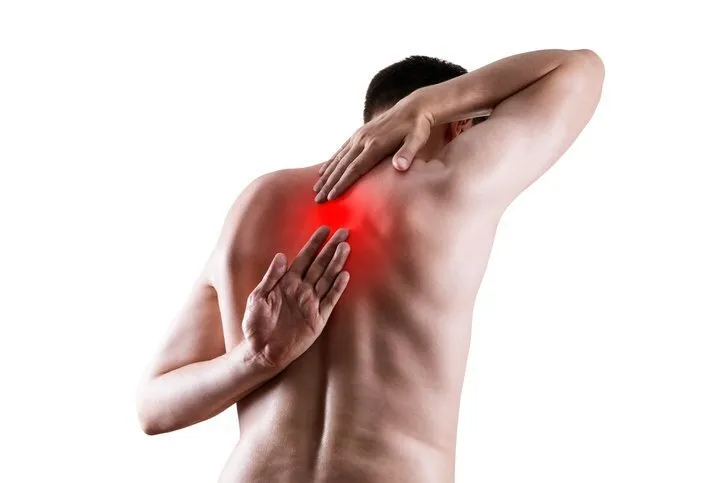


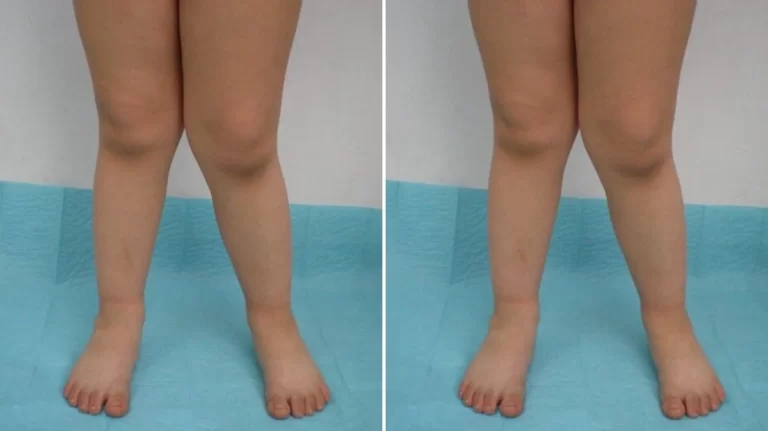

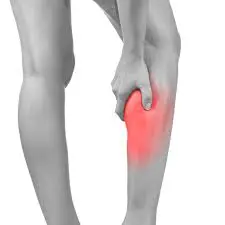
4 Comments